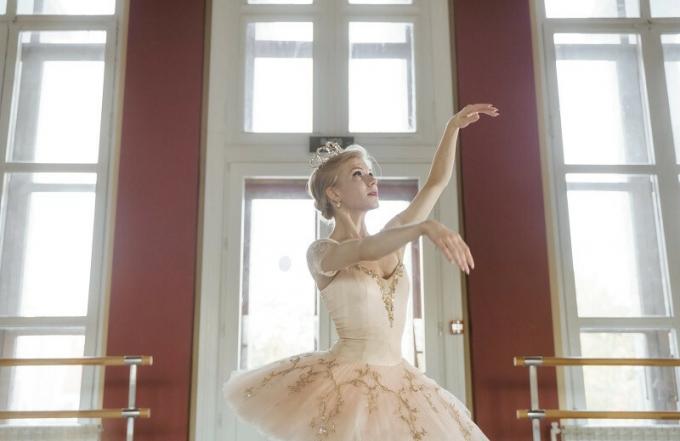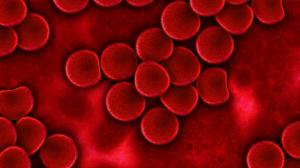The 8 types of coordination (and their main characteristics)
The human locomotor system is made up of the union between the muscular system and the osteoarticular system, that is, muscles and bones that not only protect our organs, but also allow movement and locomotion.
We have more than 650 muscles that, when contracting, cause different body movements, thus dragging the bone mass and being helped by ligaments, tendons, cartilage and joints. Muscles are the functional organs of the locomotor system and thanks to them we have the function of locomotion.
The ability of muscles to contract and relax is mediated by the nervous system and requires a precise and harmonic synchronization so that we can make all kinds of movements. In order for us to move, both to move around and to pick up objects, there needs to be muscular coordination.
This coordination can occur in different ways, involving different physical abilities, and then we will talk about what its main classes. So let's see what are the types of muscle coordination.
- Related article: "The 7 types of movement disorders: characteristics and symptoms"
What is coordination in the human body?
In anatomical terms, we can define coordination as the ability of the skeletal muscles of the body to synchronize in trajectory and movement in order to carry out a technical gesture.
This ability is the product of the harmonic synchronization between the nervous system and the musculature, where our brain sends orders that travel through the spinal cord, reach the peripheral nerves and, in turn, reach the musculature setting in motion the skeleton. Thanks to this balance, we can control our muscle tone and perform fine and precise movements.
Related to this idea we can speak of neuromuscular coordination, a capacity that can be altered in approximately 8% of school-age children. Children who suffer from a neuromuscular disorder may have motor education problems and, due to their coordination problems may have an unsteady walk, be prone to stumbling, colliding very often, or not having the ability to hold on to some objects.
Motor coordination can be learned and improved, which is why it is so important for boys and girls to play physical sports in which they will practice their motor skills and automate movements. While it is true that human beings are born with a certain natural capacity for coordination musculoskeletal, it is always advisable to do everything possible to improve it and become more skilled in physical tasks.
By developing from a very young age, this will give us the tools that, on a nervous level, will allow us to carry out movements in an organized, directed, precise and synchronized way.

- You may be interested in: "Reflex arc: characteristics, types and functions"
Types of muscle coordination
Now that we understand what muscle coordination is in general terms, let's see what types of motor synchronization there are. Despite the fact that our muscles are involved in all the movements we carry out, all of them controlled by the nervous system, the same muscles and skills are not involved when, for example, we are playing soccer as when we dance ballet.
1. Dynamic coordination
Dynamic or general coordination is a type of motor synchronization that allows us to put different parts of the locomotor system in motion without interfering with each other. That is, this type of coordination allows us to move the body efficiently, without the movement of some parts hindering the movement of others.
All parts of the body intervene in this type of coordination and, therefore, we say that a global synchronization is necessary, in which each locomotive region fulfills its function in a particular way but within a set, without interfering or hindering the motor activity of the others regions.
Dynamic coordination is what gives us stability when we move dynamically, that is, when we involve many muscles different but that each one makes a specific movement in order to carry out a well-coordinated complex action, such as walking or to run.
- Related article: "Motor neurons: definition, types and pathologies"
2. Spatial coordination
Spatial coordination It is the one that we apply when we organize our muscular movements to adapt our general movement to a foreign path or space.
Through this type of motor synchronization we can adjust our muscular activity to movement of a mobile object in our environment, in order to carry out the technical action that is necessary.
An example of this we have in baseball batters and volleyball players, sports in the that the body movement has to be coordinated with that of the ball in order to reach it and beat her up.
- You may be interested in: "Spatial intelligence: what is it and how can it be improved?"
3. Intramuscular coordination
Intramuscular coordination is the ability of our muscles to contract when they receive orders from the central nervous system through the peripheral nerves.
Muscle cells, called myocytes, have actin and myosin filaments inside them that are activated when muscles receive electrical impulses, and that allow myocytes to contract, which makes possible the biomechanical action of the muscles.
- Related article: "Muscle fiber: what is it, parts and functions"
4. Intermuscular coordination
Intermuscular coordination is the overall ability to activate different muscles while engaging in physical activity.
This is not limited to the contraction of a specific muscle, but of several of them that are activated in a synchronized way to perform more or less complex locomotor actions, which is why it is called intermuscular, that is, between muscles.
An example of intermuscular coordination is when we hit a golf ball, involving different muscle groups that must coordinate with each other.
- You may be interested in: "Parts of the Nervous System: anatomical structures and functions"
5. Segmental coordination
Segmental or segmented coordination is one that implies an increase in fitness in specific regions of the body. Unlike the dynamics, which is based on a global increase in the global synchronization of the device locomotor, in the segmental, specific coordination reactions of the area are enhanced anatomical.
The sense of sight plays a fundamental role in this coordination modality. In fact, segmental synchronization works from the relationship between vision and the different parts of the human locomotor system involved. Being specific to each region, we can distinguish three main forms of segmental coordination: eye-hand, eye-foot, and eye-head.
5.1. Eye-hand coordination
Eye-hand coordination, also known as eye-hand or visual-motor coordination, is the type of segmental coordination where motor skills they are involved in the use of their hands, thus having the synchronization between the visual and the manual.
This type of coordination is what allows us to handle our hands depending on what we are seeing and the we can see in everyday activities such as typing on a computer, writing with a pen or throwing a rock to the lake.
5.2. Oculo-pedic coordination
Eye-pedic coordination is the modality of segmental coordination in which the use of the feet is involved, synchronizing the visual with the pedic.
This type of coordination allows us to handle our feet appropriately based on what we perceive by the sense of sight, a classic example being how we use our feet while playing soccer.
5.3. Eye-head coordination
In eye-head coordination motor skills are involved in which the use of the head is required, understood as the anatomical region.
This type of coordination is what allows us to move our heads based on what we are seeing, adapting to the needs that the environment awakens us. An example also related to football would be to shoot the ball with the forehead.
6. Static coordination
Static coordination is the type of musculoskeletal synchronization that has the peculiarity of achieving “no movement”. It is the motor skill that allows us to be physically still when we are standing, having control and stability over our posture.
7. Fine coordination
Fine coordination is the type of motor timing that allows us to make very precise movements, in which the fine muscles are involved.
This coordination is based on the development of locomotor skills to coordinate light, small and highly controlled muscle movements. An example of this would be knitting, writing, assembling a model ...
- Related article: "Types of motor skills (gross and fine) and their characteristics"
8. Coarse coordination
Finally we have the coarse coordination, antagonistic to what we have seen in the previous point.
This type of motor synchronization does not lead us to be able to perform very precise muscle movements, but to carry out locomotor tasks involving large biomechanical regions of the organism.
Gross coordination is what we can observe in movements that do not require too much precision, such as jumping.



